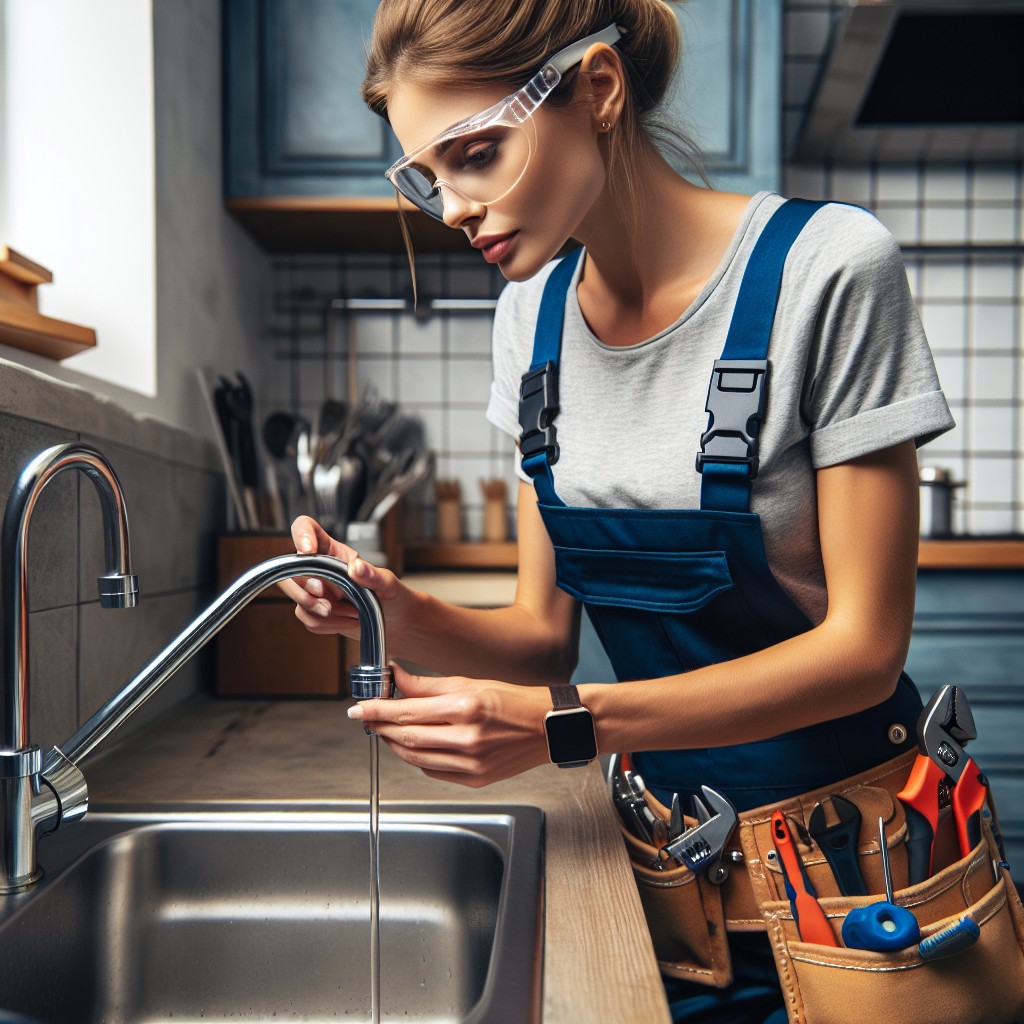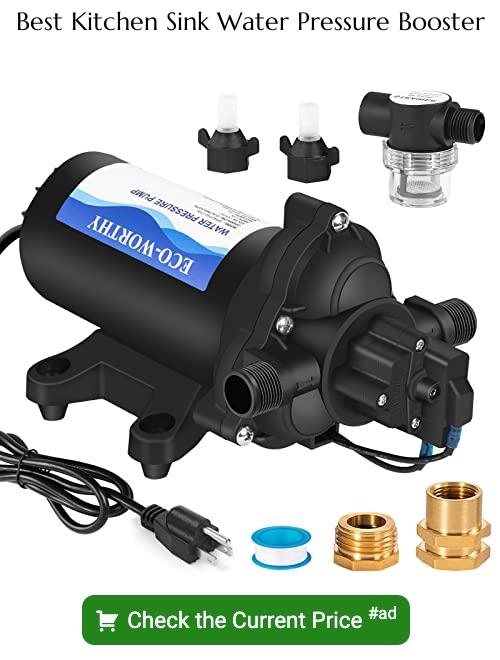Last updated on
If you’re struggling with low water pressure in your kitchen sink, this article will guide you through the steps to diagnose and fix the issue.
Key takeaways:
- Diagnose water pressure issues by checking other fixtures.
- Clean a clogged aerator to improve water pressure.
- Detect and address leaks under the kitchen sink.
- Consider municipal water supply problems as a possible cause.
- Call a professional plumber for persistent low water pressure.
What's Inside
Diagnosing Water Pressure Issues

Before diving into repairs, pinpointing the cause is crucial. Check other fixtures to determine if it’s a localized issue or widespread throughout the home. If it’s isolated to the sink, investigate further. Test the water pressure with a gauge; a reading below 40 psi indicates a problem. Is the drop sudden or gradual? Sudden changes often point to a malfunction within your home system, while a gradual decline may hint at mineral buildup restricting flow. Cross-reference with your neighbors — are they experiencing similar issues? This could signal a municipal supply concern that’s out of your hands. Get a snapshot of your system’s health by making these assessments first.
Clogged Aerator: How to Clean
A clogged aerator can significantly reduce your kitchen sink’s water pressure, creating a frustrating trickle when you expect a steady flow. Fortunately, this problem is often easy to fix with a few simple steps.
1. Begin by unscrewing the aerator at the tip of the faucet. Depending on the design, you may need a wrench or pliers, but many can be removed by hand.
2. Once removed, take a good look at the components. You’ll likely see a mix of a screen and rubber washers.
3. Gently rinse each part with water to remove loose sediment. For stubborn grime, immerse the parts in white vinegar for up to an hour; vinegar works wonders to dissolve mineral build-up like calcium deposits.
4. Use a small brush—a toothbrush is perfect—for an extra thorough clean. Poke through the small holes of the aerator screen to dislodge any remaining particles.
5. After everything is squeaky clean, reassemble the aerator and screw it back onto the faucet.
6. Turn on the tap to check if water pressure has improved. Usually, cleaning an aerator is a small task with big results.
Remember, regular maintenance of your faucet aerator not only ensures consistent water flow but can also extend the life of your kitchen plumbing.
Leaky Pipe: How to Detect and Address
Detecting a leaky pipe under your kitchen sink can be as straightforward as looking for visible signs of water damage or moisture. This could manifest as dampness in the cabinet, a musty odor, or even mold growth, indicating a persistent issue. Listen for the tell-tale hissing or dripping sounds when the tap is off. If you suspect a hidden leak, use a dry tissue or paper towel to wipe along pipes and joints; any wet spots will be your giveaway.
Addressing the leak promptly prevents further damage and can help restore proper water pressure. Start by shutting off the water supply. This is critical to preventing water from gushing when you disassemble the piping. After that, tighten any loose joints by hand or with a wrench. If the issue persists, replacing the affected pipe section or fitting might be necessary, which can be a DIY job with the right tools and sealant. However, if the situation seems beyond a simple fix, calling a professional plumber is the smartest move for your home and safety.
Municipal Water Supply Problems
Sometimes the root of low pressure isn’t within your home but stems from the municipal water supply. A drop in city pressure can occur due to high demand during peak usage times, maintenance work, or infrastructure malfunctions.
To check if this is the case:
- Notice patterns: Is the drop in pressure at certain times of the day consistent? This might indicate a systemic issue.
- Talk to neighbors: Are they experiencing the same problem? A yes strengthens the possibility of a municipal cause.
- Check for advisories: Local authorities sometimes issue water supply notifications. Look out for these or call the water department.
- Inspect the water meter valve: Ensure it’s fully open. Occasionally, partial closure after repairs can reduce water flow to your property.
Taking these steps gives a better understanding of where the problem lies and whether you’ll need to wait for city repairs or take matters into your own hands.
Consulting a Plumbing Expert: When to Call a Professional
Sometimes, despite your best efforts, low water pressure in your kitchen sink remains a persistent problem. This is when it’s prudent to defer to a professional. Here are key indicators that it’s time to pick up the phone:
- 1. Puzzling Pipe Layout: If your home has an unconventional or outdated plumbing system, a professional plumber can navigate the complexity with expertise.
- 2. Persistent Pressure Problems: When the pressure doesn’t improve after you’ve checked the aerator and supply valves, a plumber can assess deeper issues you might not be able to see.
- 3. Visible Corrosion: Signs of corrosion on visible pipes suggest it might be widespread, affecting your entire plumbing system—a situation best handled by someone with the right tools and experience.
- 4. Odd Noises: Sounds like banging or whistling in the pipes can indicate high pressure in certain areas or faulty pipe supports, both of which professionals can diagnose and resolve effectively.
- 5. Water Quality Concerns: If the water pressure issue comes with discolored water or an unpleasant smell, it could point to serious plumbing or water source concerns that demand expert analysis.
When in doubt, professional plumbers provide peace of mind, ensuring that your water pressure issues are correctly diagnosed and efficiently resolved. Plus, they can spot potential problems to prevent future headaches, making them well worth the investment.





